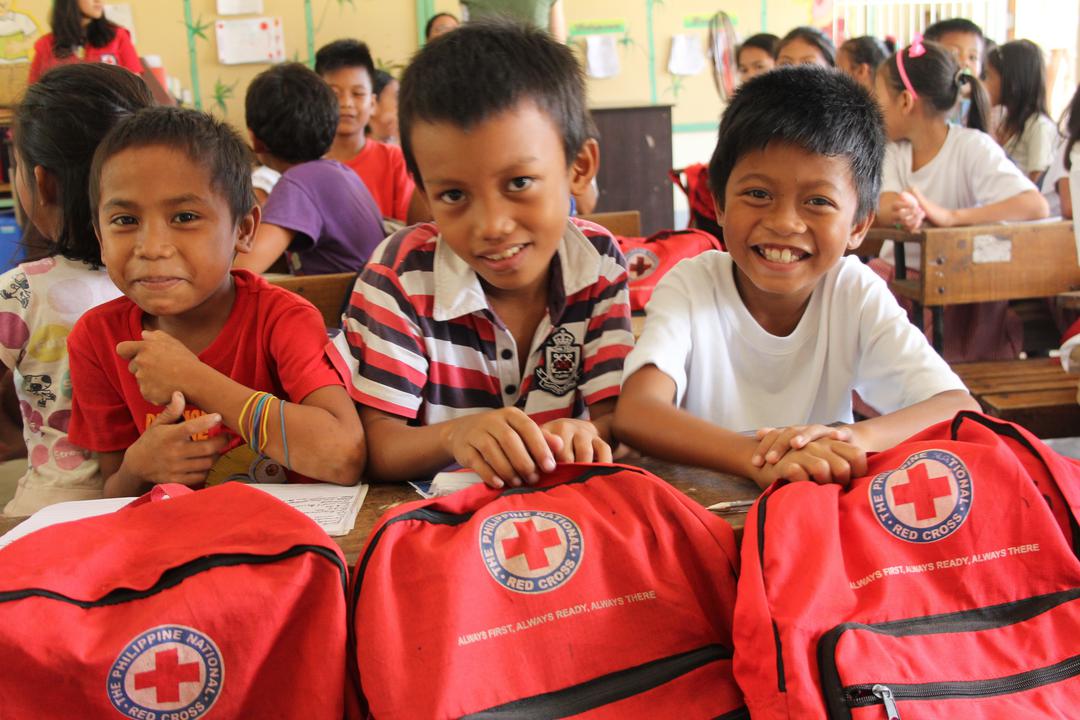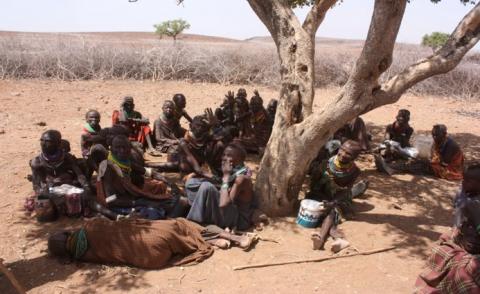From Local Infrastructure to National Policies: How the Albanian Red Cross Leads the Way in Building Resilient Communities

With a rich history spanning over a century, the Albanian Red Cross has been at the forefront of disaster preparedness and response efforts, from addressing local emergencies to promoting long-term community resilience. Fatos Xhengo, the Coordinator of the Disaster Preparedness and Response Program, brings over 30 years of experience to his role.
In this DRM Practitioner Spotlight interview, Fatos reflects on his journey, from his early days with the IFRC delegation to his current leadership in the Albanian Red Cross. He shares key insights from projects like the Zurich Flood Resilience Alliance, showcasing how local collaboration and preparedness initiatives are shaping a more resilient future for Albania.
Overview of Work
Can you tell us a bit about yourself and your current role at the Albanian Red Cross?
In 2021, the Albanian Red Cross celebrated its 100th anniversary. Given the ups and downs of the political context in Albania, we can say the current National Society experienced a significant rebirth in 1991. Around this same time is when my history with the Red Cross Movement began as I first joined the IFRC Delegation that was established in Tirana, the capital of Albania, and then later joined the Albanian Red Cross. For the past 30 years, I have witnessed and supported the growth and strengthening of our National Society. Initially trained as an economist, my role in the Red Cross is focused on disaster management, covering both preparedness and response activities.
On a personal note, I am from Korçë, a mountainous region in the southeast of Albania, bordering with North Macedonia and Greece, I am enthusiastic about helping people in need, and my mornings are often accompanied by hibiscus tea, replacing my former dependence on coffee!

Tell us more about the work the Albanian Red Cross does in terms of disaster preparedness and risk reduction?
The Albanian Red Cross is the oldest and largest humanitarian organization in Albania, recognized by law as a key partner within the national civil protection system. With a network of 39 branches and thousands of volunteers across the country, we support vulnerable people on the ground in local communities to alleviate suffering and save lives. Our key activities cover preparing and responding to emergencies and disasters, promoting first aid knowledge and skills, and providing social and health support services. We work with the general population as well as more targeted actions with vulnerable communities, youth, schools, and businesses.
Additionally, the Albanian Red Cross has a key role in bridging local communities with subnational and national authorities and we participate in numerous dialogues and policy development processes, primarily to share our experience and expertise and to transmit the concerns and interests of people in need.
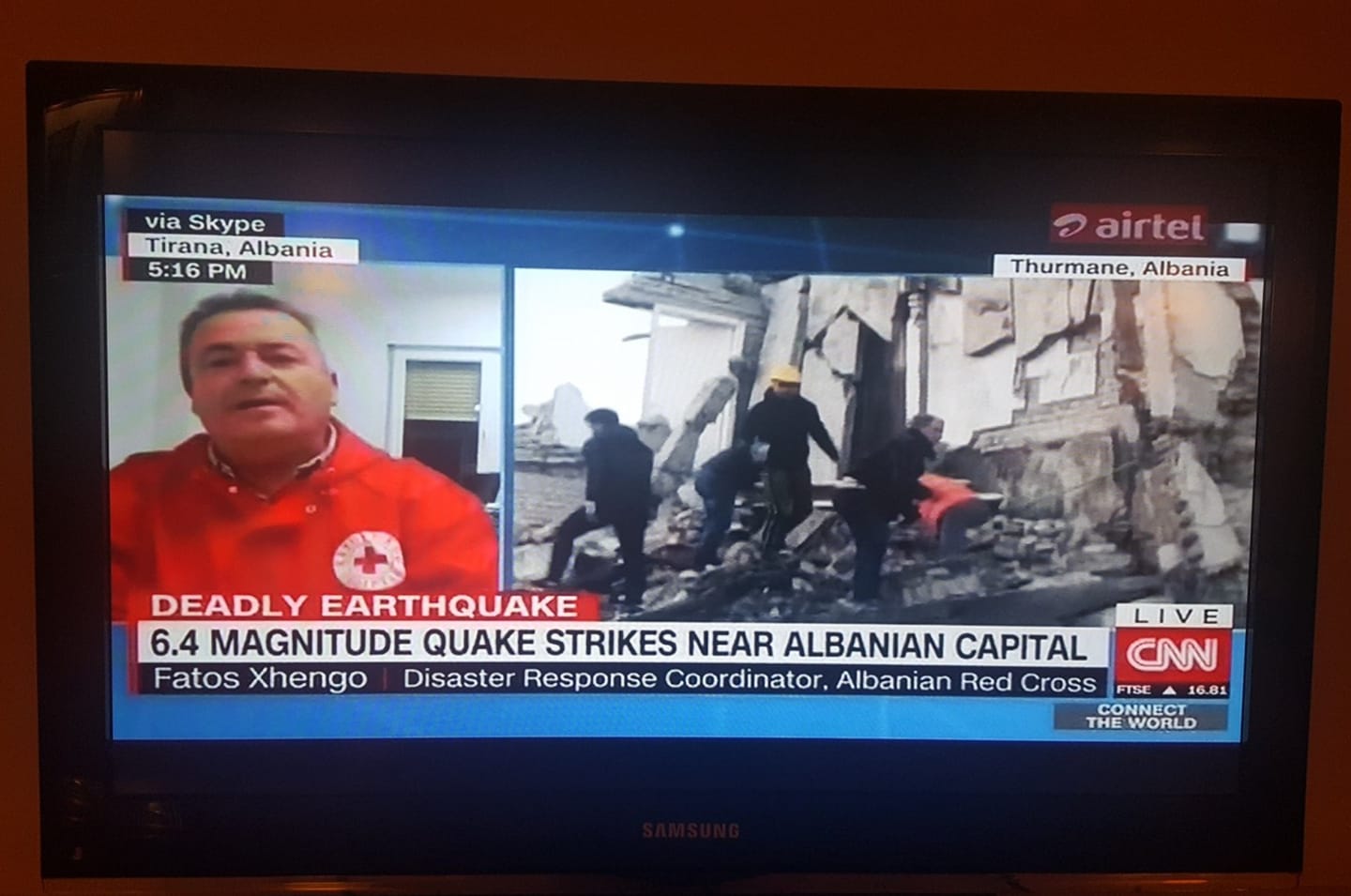
Do you have a dedicated team that focuses on preparedness/DRR?
The Disaster Preparedness and Response Program is an essential part of the Albanian Red Cross. Historically, we have developed expertise in disaster response after having provided significant support to the population in the aftermath of important crises such as the 2009-2010 floods, 2019 earthquake and Covid-19 pandemic, among many other events. In addition to trained response teams throughout the country, the Albanian Red Cross has leveraged its logistics capacities, including the Emergency Operation Centre, warehouse, vehicles, and training centers to take more effective action to support more communities and families affected by disaster.
More recently, the Albanian Red Cross has undergone an important shift to include preparedness and resilience under the disaster management program. This has included initiatives to raise risk awareness in the population and to scale up first aid training and simulations. We have also extended our reach to work directly in collaboration with vulnerable communities and local populations to increase resilience, piloting community-led interventions, and developing best practice for engaging local authorities.
What current project or initiative do you find especially exciting or impactful? What makes it so?
Between 2018 and 2024, the Albanian Red Cross implemented a community resilience project in the municipalities of Shkodra, Fier and Vlore to increase local preparedness in the face of floods. This work was undertaken as part of the Zurich Flood Resilience Alliance; a multi-sectoral partnership bringing together actors in the humanitarian, research, and private spheres to strengthen climate resilience across 25 countries.
This project has had an important impact internally, on our ways of working and methodologies, and externally, on strengthening community capacities and influencing national policy. Following a comprehensive process to measure community resilience and identify gaps and opportunities, the Albanian Red Cross designed and implemented a number of interventions targeted at households, communities and national stakeholders. First aid and health trainings, large-scale DRR awareness campaigns and community response teams were at the core of this project.
Another key area of impact was the strengthening of local flood protection infrastructure in collaboration with local authorities, namely the construction of an elevated platform and flood wall protecting the market in the community of Fitore and the construction of a new bridge to support evacuation in the community of Darëzezë. As a result of these actions, we have positively impacted more than 150,000 people and indirectly benefitted over 300,000 people.
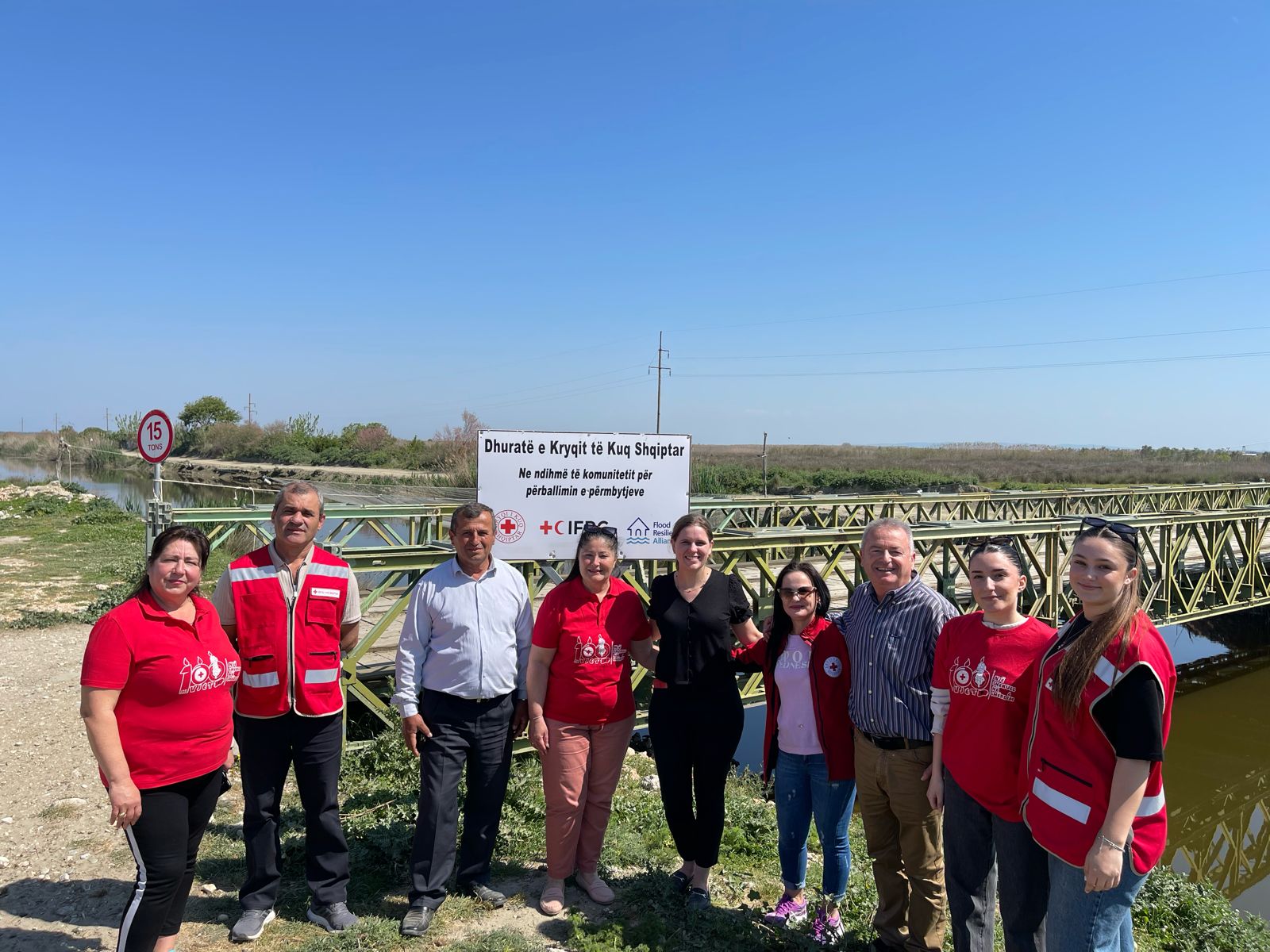

Staff and volunteers from the Albanian Red Cross set up stands in the city centre across the country to raise peoples’ awareness of flood risks. Photo: © Albanian Red Cross
Challenges, Impact and Priorities
What are some of the challenges you face in preparedness/DRR work in Albania?
In my experience working closely with communities in Albania on disaster preparedness and response, one of the challenges I’ve observed is that DRR efforts sometimes overlook the critical role of the community itself. However, this mindset is evolving. By engaging directly with community members—discussing risks, their impacts, and the actions they can take at the individual, family, and neighborhood levels—we see strong commitment from communities to prepare for emergencies and address climate change effects. This shift in engagement is fostering greater resilience and local ownership of preparedness initiatives.
Do you have any recent achievements or successes that you’d like to share with the rest of us? In your opinion, what helped achieve this success?
The flood resilience project marked an important paradigm shift towards holistic community resilience that we as the Albanian Red Cross have led within our national context. The project’s activities in flood-prone communities provided tangible examples of how to work at the local level on long term capacity building and resulted in a series of intervention models and recommendations that we have been able to document and share with key stakeholders.
The Albanian Red Cross has contributed to the development of national policies, including the National Strategy for Risk Reduction from Hazards 2023-2030, Action Plan (2023-2030) and the Disaster Risk Assessment in Albania. By highlighting local voices and the experiences of this project, the Albanian Red Cross has contributed to a shift in mindsets and policies that prioritize a balance between disaster preparedness and response, as well as the engagement of vulnerable communities as partners for resilience building.
The approach that supported us in this advocacy work was knowledge management; that is, documenting and sharing our successes, challenges and lessons learned. Stakeholders were particularly moved by stories and insights from the community members themselves. In this way, the Albanian Red Cross was able to strengthen its position in bridging the gap between government and local communities.
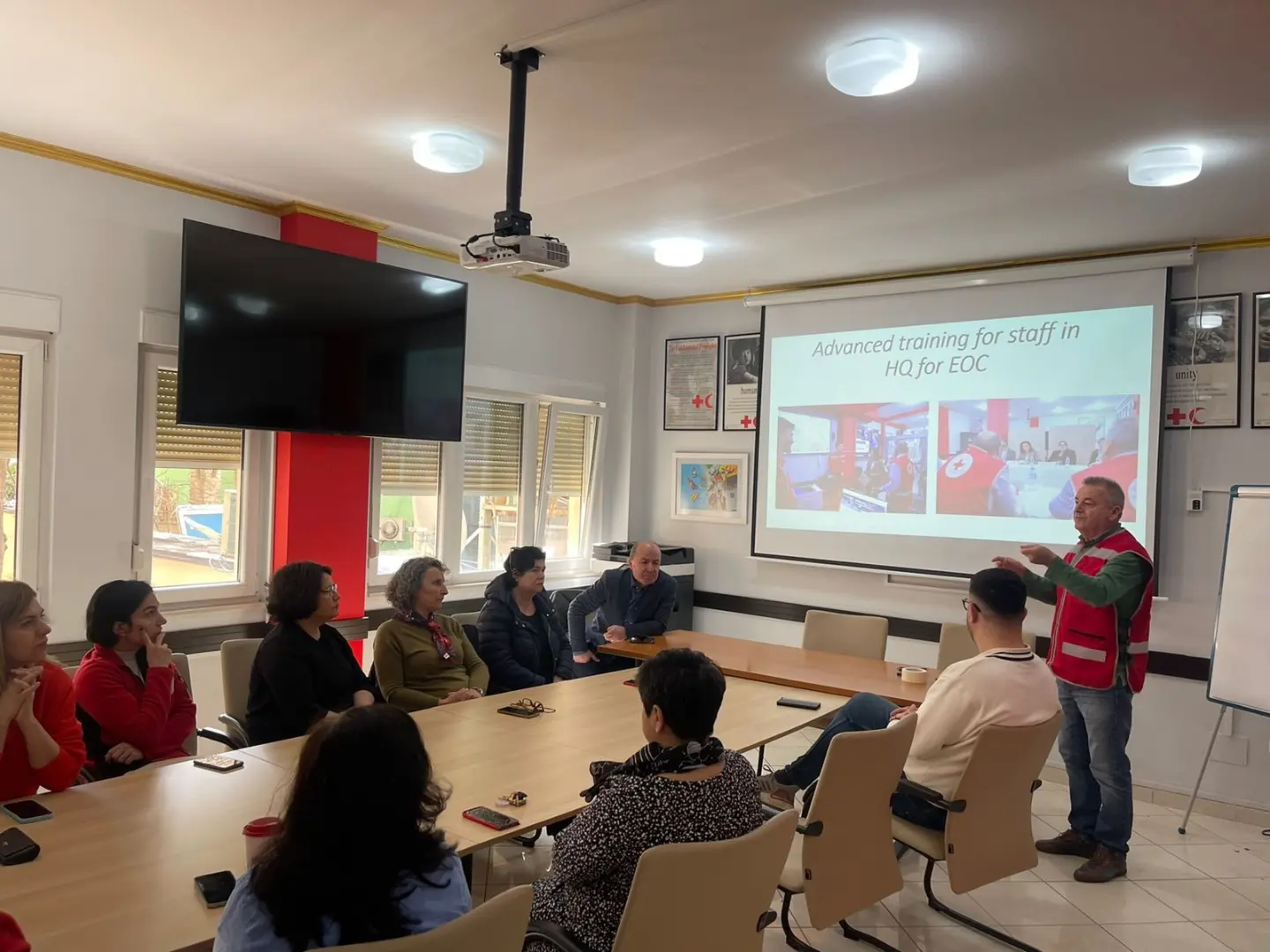
What are one or two top priorities for your team in the next 1-2 years when it comes to preparedness and risk reduction?
A functioning Early Warning System (EWS) that allows authorities, organizations, and communities to take timely and effective action to save lives and livelihoods, particularly in the face of climate hazards, is a priority for Albania.
In 2023, the Albanian Red Cross organized two workshops on Early Warning Early Action that engaged key national stakeholders such as the National Civil Protection Agency, Albania Institute of Geo Science, Institute of Public Health Albania, among others. These inter-institutional workshops included a review of the Common Alerting Protocol (CAP), the development of contextualized Public Awareness Public Education (PAPE) key messages and led to agreement on the next steps of advancing a multi-hazard early warning system in Albania.
The Albanian Red Cross, in collaboration with the IFRC, is committed to supporting this process and to strengthening actions that the National Society can lead as part of the Early Warning System.
Innovative Approaches and Strategic Partnerships
What exciting innovations or new technologies have you seen utilized in disaster preparedness and risk reduction lately?
As Red Cross, we are always seeking to understand the needs of the most vulnerable populations and adapt our interventions to provide the most relevant and impactful services. As part of the Flood Resilience Alliance, the Albanian Red Cross implemented a comprehensive assessment process, called the Flood Resilience Measurement for Communities (FRMC), which allowed us to better understand the community context, establish connections with key actors, identify priorities and potential entry points, and ultimately design locally led interventions.
From the outset this resilience framework pushed us to shift from seeing communities as one-off participants to engaging communities as long-term collaborators. In particular, the focus groups turned into a space not only for collecting the required data, but also opportunities to share, listen, reflect, and brainstorm. This approach set the foundation for communities feeling heard and understood and prompted strong acceptance and engagement from the population during the project. Even before the implementation of interventions, the community began to see themselves as agents of change that could participate and lead resilience-building in their localities.
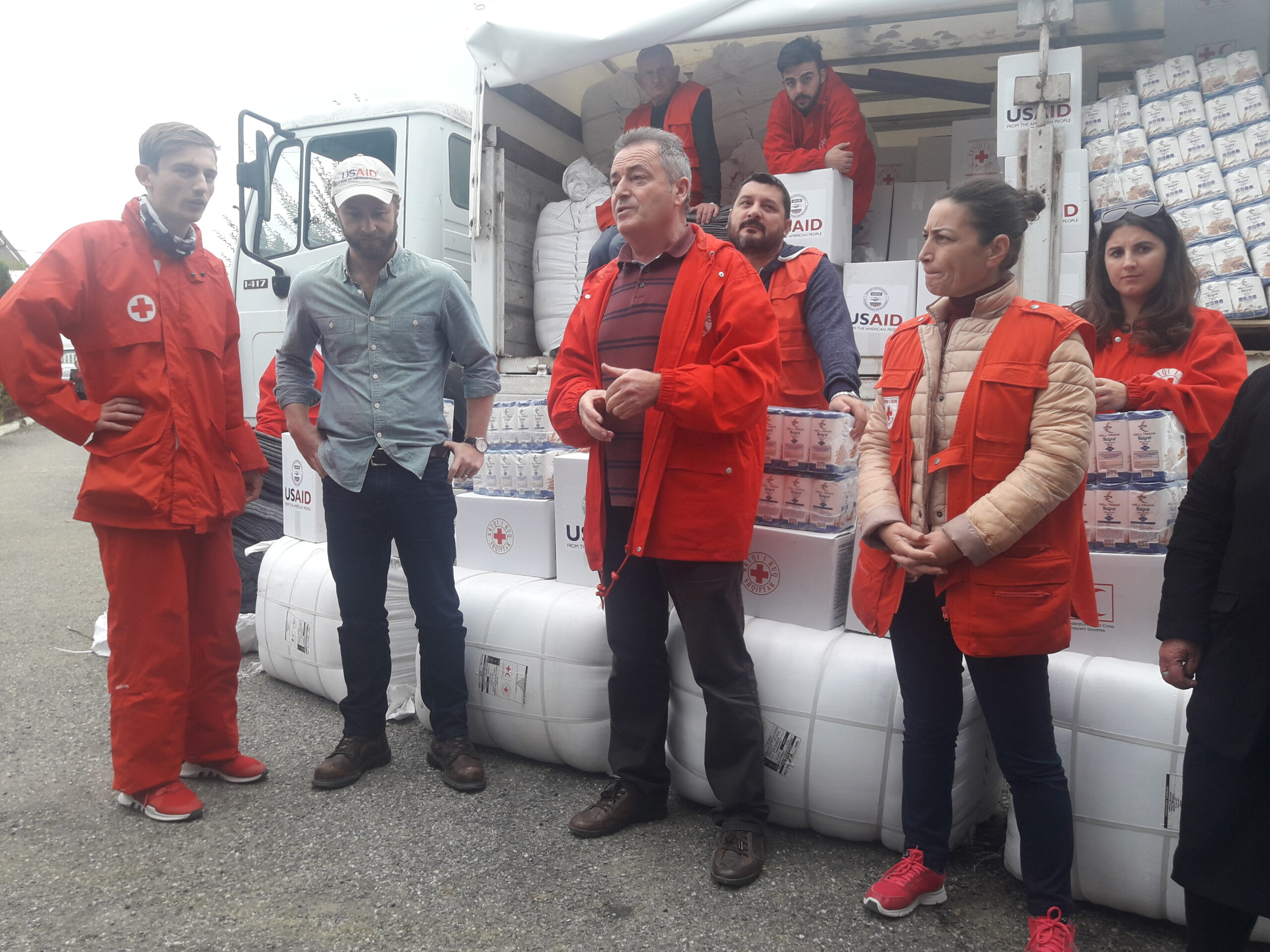
What connections or collaborations outside your National Society have been most useful?
Strengthening community resilience has required working alongside partners for raising awareness, developing flood protection infrastructure and advocating for national policy change. In this effort, Albanian Red Cross has worked closely together with Municipal Governments, the National Agency for Civil Protection, the Ministry of Health and Social Protection, the Ministry of Education and the Ministry of Defence.
Especially during our response to emergencies, I have had the privilege of acting as the contact person and coordinator of the Albanian Red Cross with many governmental institutions, UN agencies, EU and non-governmental organizations ensuring collaboration across partners to provide more effective support to the affected population and people in need.
In an ideal world with unlimited resources, what would you love to implement or change when it comes to preparedness/response in your country?
In an ideal world, every Albanian family knows the risk that they are exposed to, they know the measures to prevent and react quickly in cases where an emergency occurs.
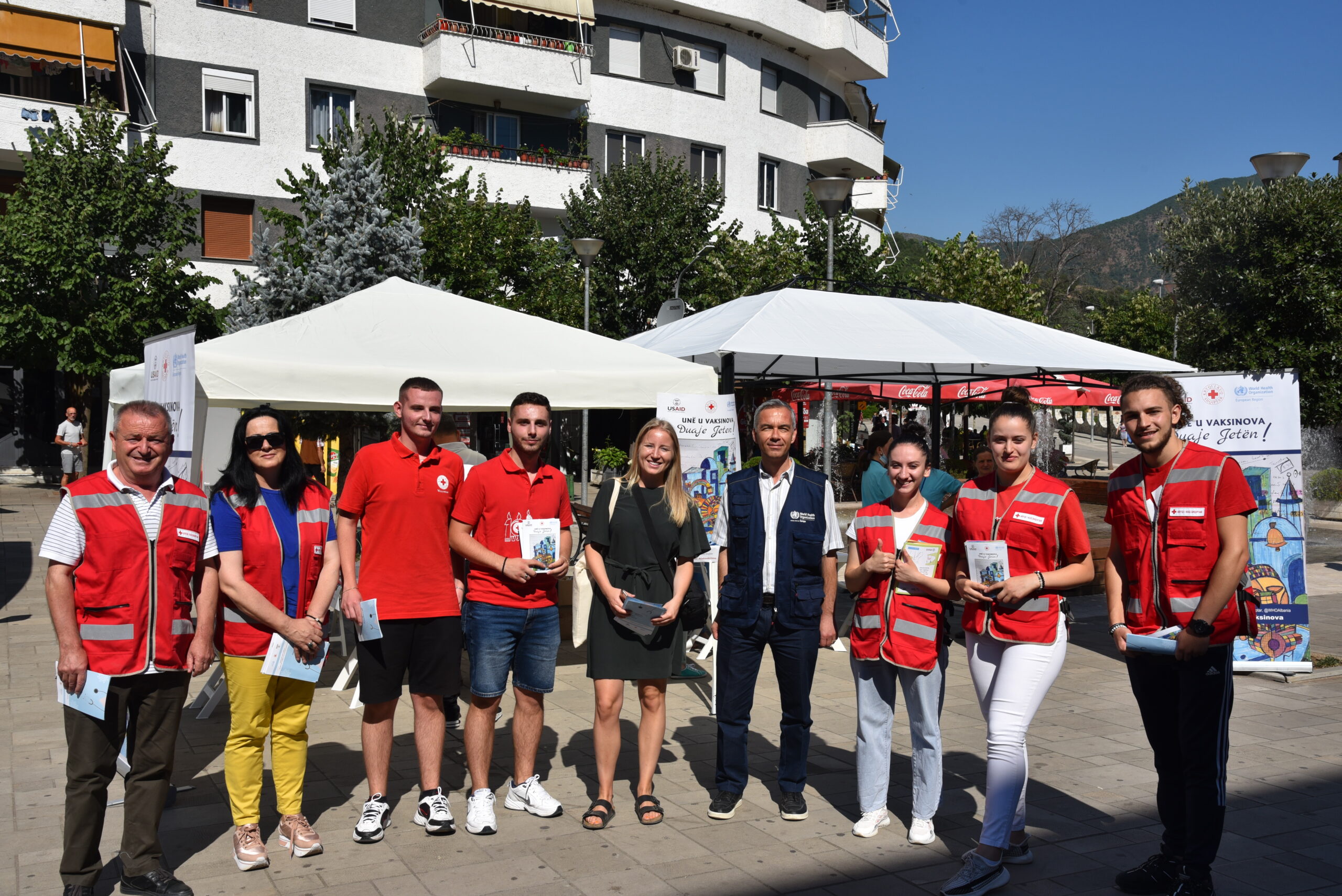
What advice or a lesson from your experience would you give to colleagues in other National Societies working in this space?
Our community-based resilience work has generated many lessons learned that have helped us to grow, adapt and innovate to ensure our actions result in the strongest impact for local populations.
As an organization, our expertise lies primarily in strengthening the social and human capitals, for example, increasing risk awareness, reinforcing knowledge and skills related to family preparedness and first aid, facilitating community organization, cohesion, and connectivity with local authorities. While these actions are essential for building resilience and make up a big part of our work, they can sometimes go under the radar when compared to interventions that are more tangible and visible such as flood protection infrastructure where the community can see and touch the flood wall or evacuation bridge that has been constructed or repaired.
Our experience as part of the flood resilience project demonstrated that community acceptance, engagement and overall satisfaction was increased when a variety of interventions were implemented. We encourage National Societies to consider stepping outside of their comfort zone and explore solutions that can support this sense of tangible and visible changes to community resilience, to be implemented alongside the more traditional Red Cross methodologies.
Special thanks to the Zurich Flood Resilience Alliance for their support in preparing this story.

